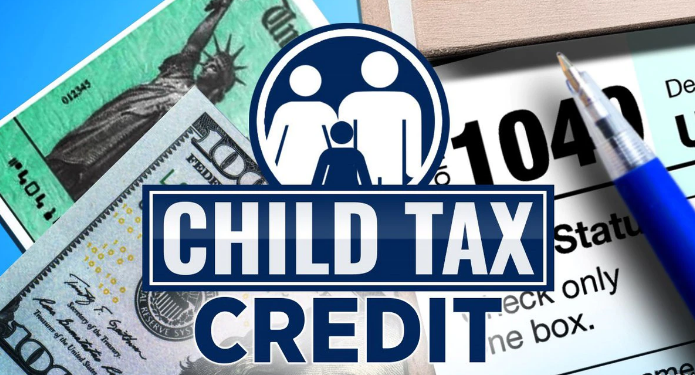Do you have a child under the age of 18? 40% of the U.S. population does! If you are in that group, how does an increased child tax credit sound? Below, we discuss what changes are in store for the upcoming tax year that could impact your tax return.
It is expensive to raise children. I should know; I have three – two in high school and one in middle school at this point. Just when you think daycare costs are over, they enter elementary school and start playing sports, cheer, band, etc. Then the costs of the latest and greatest bat or helmet or instrument start to add up. After that, high school rolls around, and the costs of car insurance, travel ball, prom attire, and cell phones all become part of the monthly bills. And don’t forget feeding and clothing the little munchkins as well!
To help offset the cost of raising kids, the U.S. government gives some parents an annual allowance in the form of a tax credit. The Child Tax Credit reduces the tax bills of families with incomes below certain thresholds.
Overview of President Biden’s Child Tax Credit Expansion
The child tax credit has been temporarily expanded under the American Rescue Plan, the massive relief bill signed into law by President Biden on March 11, 2021. Under Code Section 7527A, the IRS has established a credit that is now available to more families and pays a larger overall amount. The new tax law also allows 50% of the credit to be paid in advance, in the form of monthly cash payments beginning in July. These payments will continue monthly throughout the end of 2021. Eligibility for these payments will be based on your 2020 tax return or, if not yet filed, your 2019 return.
What is the Child Tax Credit for 2021? – A Little More Detail
First of all, let’s take a look how the American Rescue Plan’s child tax credit compares to the current child tax credit.
- How much is the credit annually? The 2020 credit was up to $2,000 per child for ages 0-16. The amount of the 2021 credit depends on the age of the child. For children ages 0-6, the credit is up to $3,600 per child; for children ages 6-17, the credit is up to $3,000 per child.
- When do I receive the money? For 2020, the credit is determined and applied against your tax liability when you file your tax return. For 2021, you will receive half the projected funds from July to December 2021 and the other half when you file your 2021 tax return in 2022. The IRS will automatically issue payments on the 15th of each month from July through December 2021, unless you have opted out. For children under 6, the monthly payment will be $300, and for children age 7 to 17, the monthly payment will be $250.
- What are the income limits to receive the full credit? 2020 adjusted gross income limits are up to $400,000 for those married filing jointly and $200,000 for all others. For 2021, the adjusted gross income limit for the full credit is $150,000 for those married filing jointly, $75,000 for single filers, and $112,500 for head of household filers.
- Who is a qualifying child? The answer to this question has not changed from 2020 to 2021. A dependent still has the same requirements as before. They must have a social security number and live with (be supported by) the taxpayer for more than half the year.
What Do You Need to do to Receive the Advance Child Tax Credit Payments?
You will need to have filed a 2019 or 2020 return to receive the credit. If you have not filed, there’s no need to worry, but you must take action. You are able to receive the child tax credit even if you do not have any taxable income. This is what the IRS calls a “refundable” tax credit. The IRS has installed an online non-filer tool that will allow individuals to file a simplified return. You can access the IRS non-filer sign-up tool at https://www.irs.gov/credits-deductions/child-tax-credit-non-filer-sign-up-tool. The simplified return will allow eligible individuals to register for the advance Child Tax Credit payments.
The new tool went live on the IRS website on Tuesday, June 22, 2021. Using this tool, families can verify eligibility or opt out from receiving the monthly payments. Also, if the IRS has received your banking information from a previously filed return, your payment will be sent to you as a direct deposit. If your bank information is not on file with the IRS, you will receive a check by mail.
Tax Credit Issues to be Aware of
The new rules do not completely replace the current rules; they work in conjunction with them. If you do not meet the qualifications to get the larger credit that is available for 2021, then you can still qualify to receive the $2,000 credit up to an adjusted gross income of $400,000 on a joint return ($200,000 for other filers). For example, if you file a joint return and your adjusted gross income is over $150,000 but under $400,000, you will still receive the standard $2,000 child tax credit for all eligible children. You will not, however, receive the enhanced credit or the advance payments that come along with it.
It is also important to understand that the IRS is prepaying a credit that you usually receive when you file your taxes. For example, let’s assume your 2020 adjusted gross income is below $150,000. Based on this, you receive the advance payments of the child tax credit during 2021. However, due to a higher paying job, a spouse returning to work, or selling a property during the year, your 2021 income is at a level where you are not eligible for the credit. You may have to pay back the advance payments you received. If you have multiple children, this could add up. In situations like this, it might be prudent to proactively opt out of receiving the advance monthly payments in 2021.
Other Child Tax Credit Issues
Another item to be aware of is how the child tax credit works for divorced parents. Some proactive planning might be necessary here as well. Generally, the custodial parent can claim the child as a dependent on his or her return. Sometimes parents will alternate years for claiming dependents. This can complicate things.
In most cases, the IRS will begin sending the 2021 advance payments to the parent who claimed the child on the 2020 tax return; however, ultimately, the credit is applied to the 2021 tax liability. Thus, the parent claiming the child for 2021 will receive the credit on their 2021 tax return; if they weren’t the one that received the advance payments, you can see the problem. The non-filer sign-up tool referenced earlier will allow taxpayers to update their tax information so that the parent claiming the child as a dependent for 2021 can properly receive the payment.
Lastly, if you have a baby in 2021, you will not qualify for the advance child tax credit payments for the child until he or she is reported under the non-filer tool and the IRS has the child in their system. The non-filer tool is expected to allow you to report a new dependent and get recurring payments if you qualify.
Children 18 and Beyond
So what happens to your tax return and the child tax credit once a dependent child turns 18? If you have any 18 year old dependents, you will no longer receive a child tax credit for them. However, if they are still your dependents, you can still qualify for an annual tax credit of up to $500.
In Conclusion
2021 continues to build on 2020 with a lot of new tax legislation. While that’s not atypical of a new administration, there’s no doubt the pandemic continues to be a primary driver of a lot of these policies. Here at Culpepper CPA, we work tirelessly to keep up with the ever changing tax laws. We’re here to help in any way we can and are happy to answer any questions on the expanded child tax credit.
We provide a full range of in-depth tax planning and consulting services and can help you proactively manage your tax situation. If we can help you, contact us today!


